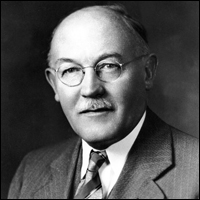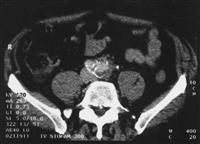Chronic periaortitis; Ormond's disease
The first description of retroperitoneal fibrosis (RPF) can actually be attributed to Albarran in 1905. He reported a fibrotic disease which resulted in "renal retention by periureteritis".
Read more about Albarran

At this time, very little was known about the pathogenesis of the condition but his description was apt in the light of current knowledge.
However, the first urological publication on RPF was by Ormond (pictured right) in 1948. He recognised that the underlying disease was inflammatory and his name became synonymous with the condition.
For many years, it had been recognised that the inflammation was usually periarterial (or periaortic). It was, however, believed that the condition was a primary periureteric inflammation, producing secondary changes in adjacent blood vessels.
Diagnosis was often uncertain because of non-specific symptoms and inconclusive imaging. Biopsy was often attempted (usually unsuccessfully). Drugs such as methysergide and practolol were commonly implicated but we now recognise that the condition is "idiopathic" in the majority of patients. Treatment was surgical and was associated with significant morbidity & mortality, with many patients dying of venous thrombosis, hypertension or the complications of renal failure.

The pioneering work of Mitchinson (from 1972) revealed the true nature of the condition. He found immunoglobulins in the walls of atheromatous vessels and suggested that leaked ceroid proteins (via medial arterial rupture) caused the perivascular inflammation.
With the introduction of routine CT scanning, it was possible to see the obstructing, fibrotic plaques clearly, and to trace their origin to inflammatory thickening around atheromatous vessels. This led to the introduction of the preferred term for the disease: chronic periaortitis (or periarteritis).
In the late 1980s, the introduction of ureteric stents (together with judicious treatment with steroids) revolutionised treatment so that open surgery to free the ureters (ureterolysis), together with transposition or omental wrapping of the ureters, was rarely required.
Further reading
View papers about RPF in the Library
← Back to Ureters